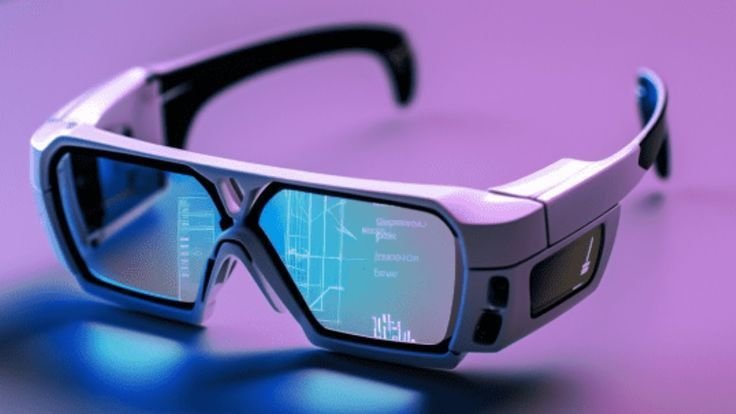Introduction
First, we had smartphones. Then smartwatches. And now—yep, you guessed it—smart glasses.
If you’re imagining some sci-fi visor or Tony Stark’s HUD, you’re not far off. Smart glasses are being hyped as the next big thing in wearable tech. They’re not just about looking futuristic—they could completely change the way we see, interact, and live in the digital world.
So, what’s the deal with these “glasses that think”? Let’s break it down.
What Exactly Are Smart Glasses?
At the simplest level:
They look like regular glasses but pack in technology—tiny displays, cameras, speakers, sensors, and connectivity.
In plain English: They put digital info directly in your field of view. No more pulling out your phone—your world is your screen.
A Quick Origin Story
2012: Google Glass makes headlines. Everyone’s amazed… until privacy and design issues make it flop.
2015–2020: AR headsets like Microsoft HoloLens and Magic Leap keep the dream alive (though mostly for enterprise use).
2021 onward: Meta, Apple, Snap, and others start working on lightweight consumer-friendly smart glasses.
Today: We’re in the “early days” phase, but the momentum is real.
How Smart Glasses Work (No Geek Speak, Promise)
Here’s the simplified version:
1. Mini Displays: Tiny projectors or lenses show digital info in front of your eyes.
2. Built-in Cameras: Capture photos, videos, or scan the environment for AR overlays.
3. Voice & Gesture Control: Talk to them, tap the frames, or even use eye tracking.
4. Connectivity: Synced with your phone or connected directly to the internet.
5. Audio: Open-ear speakers or bone-conduction tech so you can hear without blocking out the real world.
Why People Are Excited About Smart Glasses
Hands-Free Convenience: Directions, texts, notifications—without staring at your phone.
Augmented Reality (AR): Digital overlays in the real world (menus, translations, games, maps).
Work & Productivity: Engineers, doctors, and field workers using live overlays for instructions.
Entertainment: Movies on the go, AR games, even fitness tracking in real time.
Accessibility: Helping people with low vision, or offering live translations/subtitles.
The Challenges (Because Nothing’s Perfect)
Privacy Concerns: Built-in cameras raise eyebrows (nobody wants to feel recorded).
Battery Life: All that tech in a small frame drains power fast.
Design & Fashion: People don’t want to look like they’re wearing a sci-fi helmet.
Price: Early models can be expensive—often more than a high-end phone.
Tech Limitations: Displays, weight, and comfort still have a long way to go.
Popular Use Cases (What They Could Do Someday)
Live Navigation: Arrows on the street as you walk or drive.
Instant Translation: Subtitles appearing in real time while someone speaks.
Fitness & Health: Heart rate, pace, and workout data floating in your vision.
AR Shopping: Try on clothes or furniture virtually before buying.
Immersive Social Media: Live-streaming your POV to friends.
The Future of Smart Glasses
Here’s the reality: Smart glasses aren’t mainstream yet. But with Apple, Meta, and others investing billions, the question isn’t if, but when.
Experts predict we could see truly lightweight, stylish, and powerful smart glasses become mainstream in the late 2020s. Think of them as the bridge between today’s phones and tomorrow’s AR world.
Personally? I think they’ll be amazing—if they can finally figure out the battery and design. Because let’s be real: nobody wants to walk around looking like a cyborg.
Quick FAQ
Q: Are smart glasses available now?
A: Yes, but most are limited (basic displays, cameras, or AR features).
Q: Will they replace smartphones?
A: Not yet—but they might someday become the main way we access digital info.
Q: Are they safe to use?
A: Generally yes, though long-term use of AR displays is still being studied.
Q: How much do they cost?
A: Anywhere from $300 (basic models) to $3,000+ (enterprise AR headsets).
